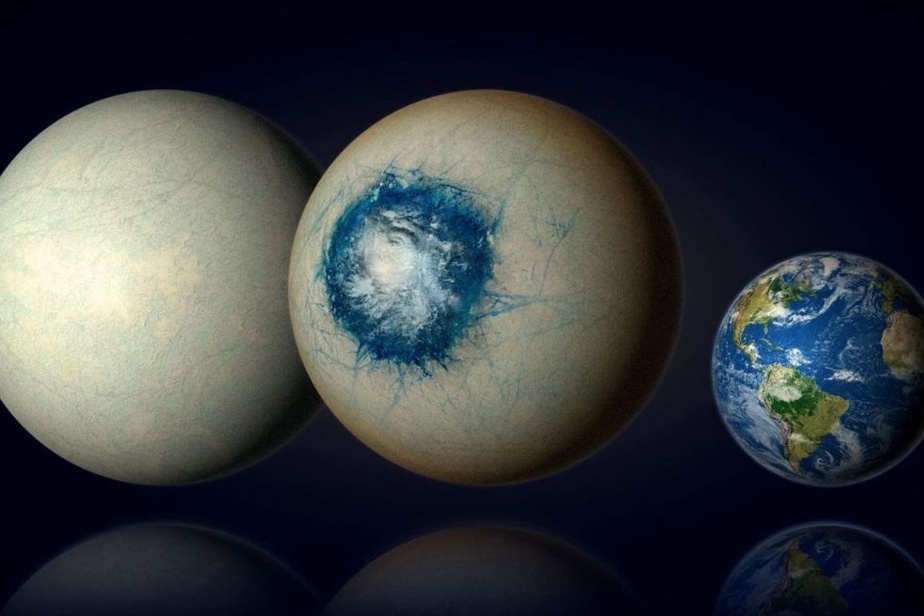(Paris) A star that has been in the sights of astronomers for years could be the first ocean planet detected outside the solar system, thanks to the James Webb space telescope, according to a study published in Astrophysical Journal Letters.
LHS 1140b has been scrutinized from every angle since its discovery 48 light-years from Earth, in the constellation Cetus in 2017. Enriching the catalog of several thousand exoplanets, these stars orbiting a star other than our Sun.
Only a handful are said to be potentially “habitable”, that is, capable of sheltering a form of life on a rocky planet located neither too close nor too far from its star.
“With temperature and pressure conditions on the surface that would allow water to be liquid and remain so,” explains astrophysics doctoral student Charles Cadieux of the Canadian Trottier Institute for Exoplanet Research.
His study, led by a team from the University of Montreal, first confirms that LHS 1140b is a super-Earth, with a mass of approximately 5.6 times that of our blue planet, and not a mini-Neptune.
Early observations placed it right between these two types of exoplanets. With a density such that it could be a mini-Neptune, a ball of rock with a very thick atmosphere of hydrogen and helium gas. Or a super-Earth, or even “an ocean planet with a slightly smaller rocky core, but compensated by an envelope of water,” explains Mr. Cadieux.
The James Webb Space Telescope helped to decide, by observing the planet’s atmosphere as it passed in front of its star. With an “absence of signals suggesting the presence of hydrogen or helium”, which rules out the scenario of a mini-Neptune.
“Large quantities of water”
The density of LHS 1140b implies that “the planet actually has large amounts of water,” according to Martin Turbet, co-author of the study and CNRS researcher at the Laboratoire de Météorologie Dynamique.
Phenomenal quantities indeed, since if the water in the oceans on Earth represents only 0.02% of its mass, it would represent 10% to 20% of that of LHS 1140b. The question remains in what form.
And that’s where the question of the planet’s atmosphere comes back. “We don’t have direct proof that it has an atmosphere,” warns Mr. Turbet, “but there are elements that point in this direction.”
First advantage, LHS 1140b is gently heated by the rays of its star, a red dwarf, with “expected temperatures on the surface which must be quite comparable to the temperatures on Earth or Mars”, he explains.
Depending on whether its eventual atmosphere contains little or a lot of greenhouse gases, such as carbon dioxide, the water surface will be frozen or not. It could even shelter a liquid ocean on a part of the planet exposed to the rays of its star.
Unless this ocean is hidden under a layer of ice, “a bit like the icy moons Ganymede, Enceladus or Europa, which orbit around the giant planets of the solar system, Jupiter and Saturn,” according to Mr. Turbet.
Hence the importance of additional observations. For example, to confirm the observations of the James Webb spectrometers indicating “perhaps the presence of nitrogen,” explains Charles Cadieux. A gas that is omnipresent, along with oxygen, in the air that humans breathe on Earth.
The Montreal team is campaigning to obtain further observations of LHS 1140b with the James Webb, at a rate of a few hours per year.
“We need at least a year to confirm that LHS 1140b has an atmosphere, and probably two or three more to detect carbon dioxide,” estimates astrophysicist René Doyon, co-author of the study, quoted in a press release from his University of Montreal.
As for going to drink from this source, there is no point in dreaming about it. It is about 450,000 billion kilometers away.
